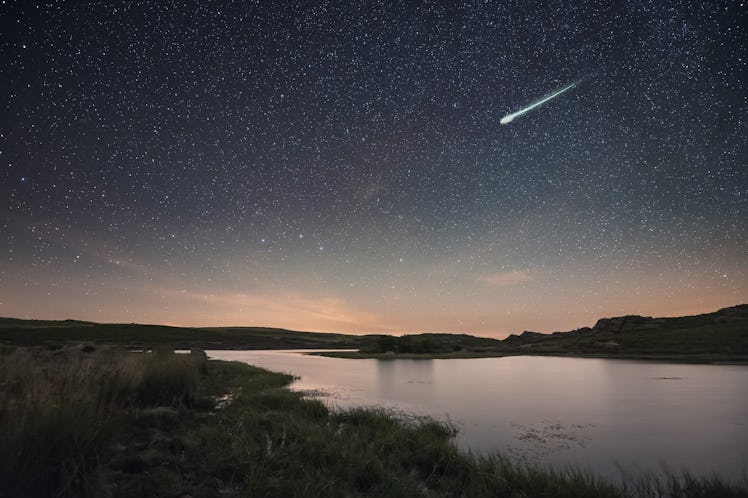The ‘Most Beautiful’ Meteor Shower Of The Year Is Nearly Here
In a good year, the Orionids can produce 75 shooting stars in a single hour.

This spectacular annual meteor shower is considered, by many, to be the most beautiful skyshow of the year and it’s just a few weeks away. Here’s everything you need to know to get ready and make the most of this year’s stunning Orionids.
What Are the Orionids?
The Orionids are essentially the debris cast off by Halley’s Comet. Unlike the recent discovery of Comet Nishimura, which won’t return to our skies for more than 400 years, Halley’s Comet famously goes around the sun roughly every 76 years — making it the only comet visible to the naked eye that can be witnessed twice in a single lifetime. In fact, human beings have been looking up and noticing Halley for millennia. The last time Earth saw Halley’s Comet was 1986 — the way-back year when both Oprah Winfrey’s talk show and Phantom of the Opera debuted — and we won’t see it again until 2061. But we can experience pieces of Halley every year, when debris from the comet flies off and fills our skies, creating the breathtaking Orionids.
How Active Are the Orionids?
According to The American Meteor Society, the Orionid meteor shower can produce somewhere between 10 and 20 shooting stars every hour. But in a good year, the shower can be far more active, with up to 75 shooting stars per hour, putting the Orionids in leauge with the most popular meteor shower, the Perseids.
When Will the 2023 Orionids Happen?
While the 2023 Orionids will be active from late September through late November, their visibility is expected to peak overnight from October 21 to 22.
To find the best time and location to view based on where you live, check out the Interactive Meteor Shower Sky Map.
Tips to Get the Most Out of the Orionids
“The best place [to see the Orionids] would be somewhere dark, away from street or city lights, where you can see as much of the sky as possible,” Air and Space suggests. “If you can’t make it away from the city, a park or a rooftop with a view of the wide open sky could do the trick.”
You don’t need any special equipment to view the meteor shower — you just need space to lie down away from city lights and the patience to keep an eye on the sky. Set aside a few hours, grab a blanket, some hot chocolate, and snacks, and you and the kids can take in the spectacular show.
This article was originally published on